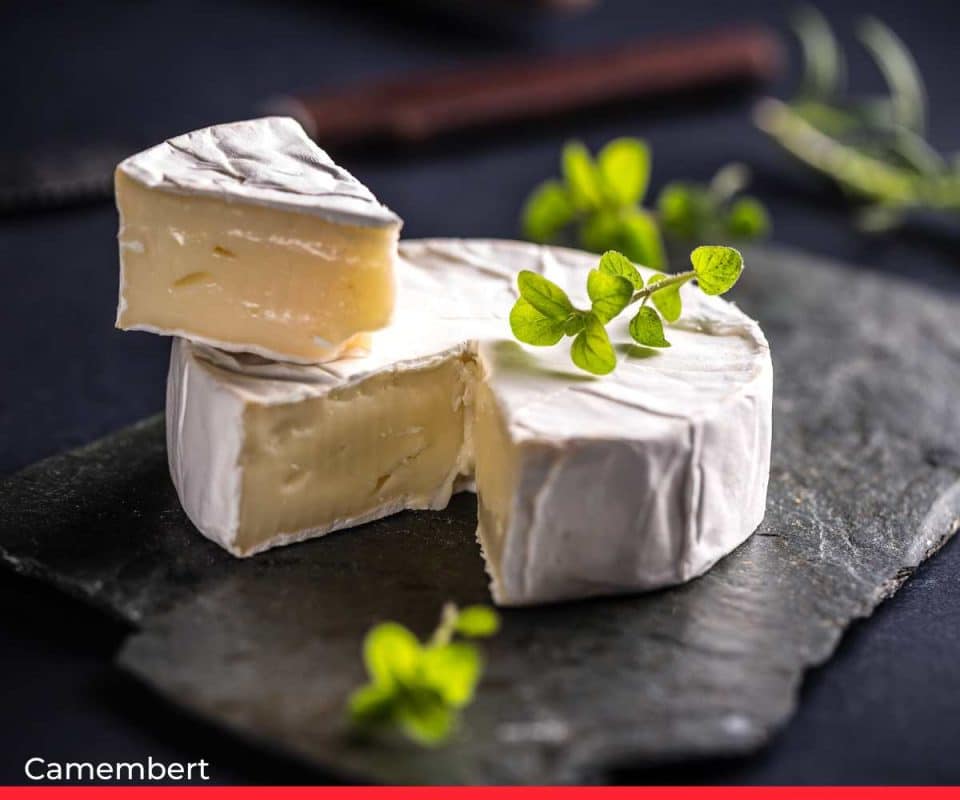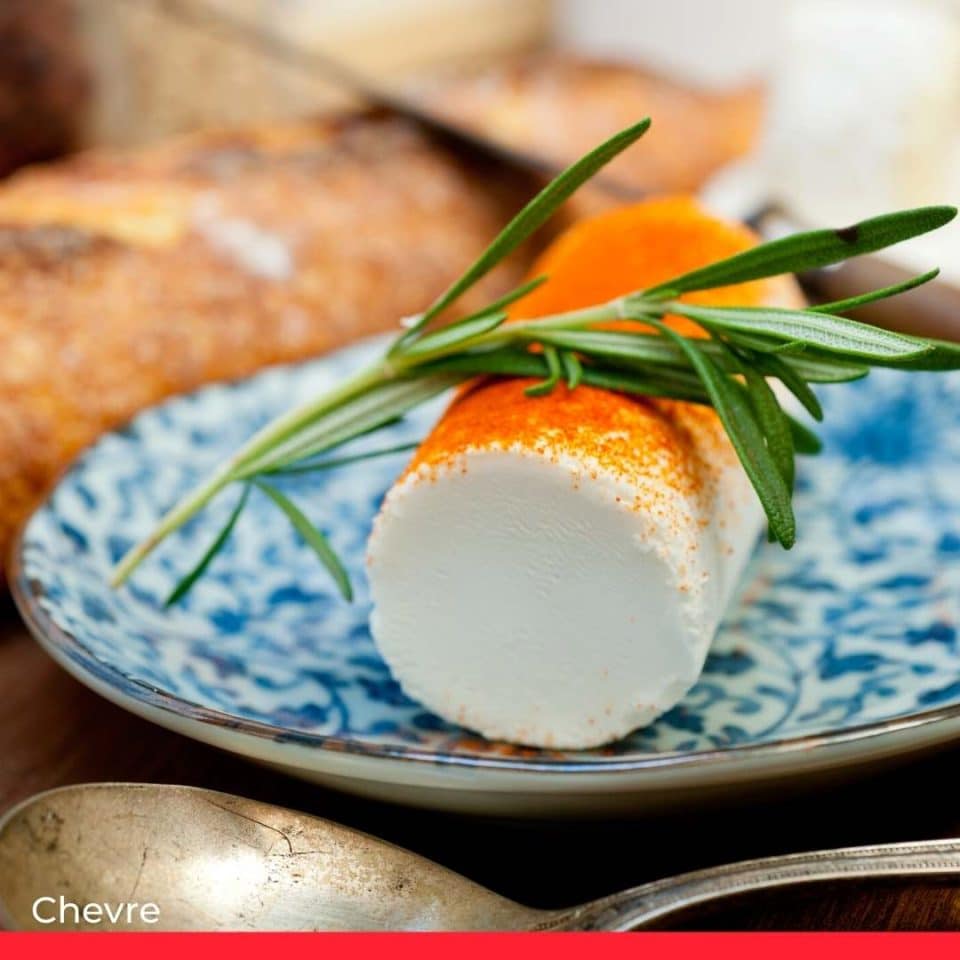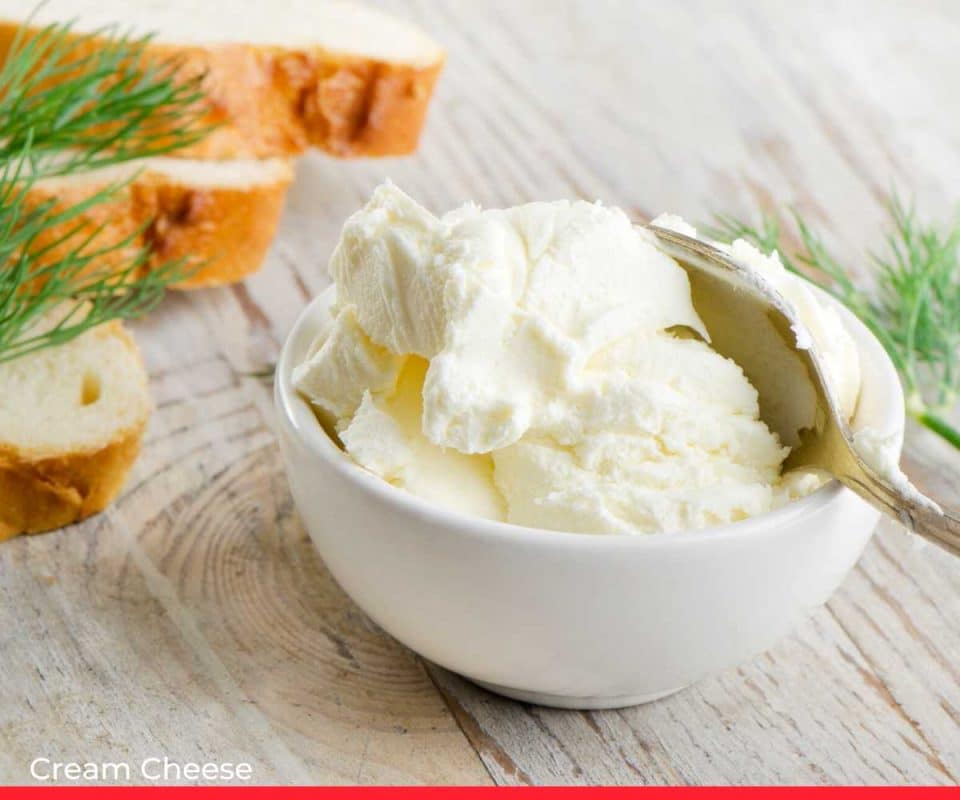6 Un-brie-lievable Substitutes for Brie

Brie is a soft-ripened French cheese with a beautiful, cream colored, fully edible rind. It is celebrated for its rich, buttery flavor and very creamy texture!
This cheese can be found in many recipes and on cheese plates all over the world, but especially in France where it originated. This world-renowned cheese is enjoyed by cheese lovers everywhere! Let’s talk about why.
Brie originated in the Île-de-France region of France, sometime around, oh I don’t know… the Middle Ages! It was first made by the monks of the Priory of Reuil-en-Brie, and it became popular with the French aristocracy and wealthy royalty.
Brie is still produced in France today, but it is also made in other parts of the world, such as the United States. Brie’s popularity has only grown over the centuries, and it is now one of the most widely consumed cheeses in the world!
There are several types of brie that vary in taste and texture. The most common is French brie, which is made from cow’s milk and has a soft, creamy texture and a slightly nutty flavor. French brie is often sold in large wheels wrapped in parchment paper, and has a soft, thin, pure white rind.
Double cream brie has a higher fat content and is even creamier than traditional brie. It is sold either in very large wheels or small wheels for home use. Then there is triple cream brie, which has an even higher fat content and an incredibly rich, buttery flavor. It is spreadable and very thick. It is sold in small wheels, one or two inches wide and it has a slightly thicker rind.
There are also varieties made with different types of milk, such as goat or sheep’s milk, but these are harder to find in North America and have a very peculiar, specific flavor. Each type of brie has its own unique flavor profile and texture, making it a versatile cheese that can be enjoyed in a wide variety of ways.
Brie pairs well with a variety of foods including fruits, berries, grapes, walnuts, and pastries. It also goes phenomenally well with wine, especially Pinot Noir, and white wines such as Chardonnay as the acidity of these wines helps to cut through the richness of this very creamy, decadent cheese. It is particularly good with buttery pastries, such as phyllo in the popular baked brie, which is served hot and bubbly, with fresh French bread!
Brie is an excellent addition to many dishes. It can be used in sandwiches, melted on top of burgers, frittatas, or added to omelets or pizza. It can also be used in desserts and pastries (think of a summer brie and berry tart!) Brie is relatively easy to find in most stores, but if it is too strong or pricey for you, here are some excellent brie alternatives.
1. Camembert

Camembert is a French cheese that is a favorite with the French… even more so than brie. It has stood the test of time and is so beloved because of its intense flavor, silky texture, and potent creaminess. It is a soft, moist cheese with a distinctive, bloomy edible rind, much like brie.
Camembert is made in a very similar style to brie but is aged longer. The result is a very strong, slightly sour, slightly sweet, rich, and creamy cheese. Its flavor profile is described as earthy and vegetal, with notes of savory umami.
The rind is edible and the texture of the cheese itself is sometimes described as chalky or pasty – but in a good way – as the French would say about their beloved Camembert! You can substitute Camembert for brie on any cheese plate or in most recipes. Just note that it is stronger in flavor so you may need to make adjustments.
2. Hermelin

Hermelin is nicknamed the Brie of the Czech Republic! Beıng made and sold in the Czech Republic, this cheese is likely hard to find, but if you do get your hands on some, it makes a very good replacement for brie, and will certainly impress your guests as it is so rare and hard to find.
Should you be in the Czech Republic though, this cheese makes a great choice on seedy crackers or with fruit. It is similar in price to brie too.
3. Mozzarella

Mozzarella is one of the most popular and easily accessible cheeses found at virtually any market – and it is easy to make yourself!
Mozzarella makes a great substitute for brie because it melts easily, is pure white, and has the same oozy, stretchy texture. If you are looking for an alternative to brie to bake, remember that mozzarella (compared to brie!) is fairly bland. You may want to add some strong flavors such as salt and fresh cracked pepper, lemon zest or preserved lemon peel, dried fruit, honey, balsamic vinegar, or jams to make up for its light flavor.
Mozzarella is an excellent alternative to brie for pregnant women as brie is made from unpasteurized milk and therefore off limits. Mozzarella is a very safe cheese though, so use it freely as a substitute for brie in all your recipes!
4. Chevré (French Goat Cheese)

Made exclusively from goat’s milk, this cheese is quite similar to brie in texture, color, and taste. The main difference is in the mouthfeel and consistency. Brie is very creamy and if aged and served at room temperature, can be quite viscous.
Goat’s cheese is much more dry and solid, though it is spreadable even at room temperature but not liquidy. It is sometimes described as having the same chalky taste as a good, aged brie, but it is firmer and has a different, earthier flavor profile.
Both kinds of cheese go great in a salad or on sandwiches, and both steal to show on a cheese plate, so this cheese is a good option to swap out in most recipes – just keep the consistency in mind if that is super important such as with a baked brie!
5. Cream Cheese or Vegan Cream Cheese

Cream cheese has a similar creamy spreadability to brie, but is much milder! Cream cheese is prized for its high-fat content and the perfect texture for spreading on pastries.
As it cooks, it becomes liquid cream and can be used in pasta sauces and fillings, as well as eaten chilled with smoked salmon, crackers, or if you’re in Montreal, served with real bagels!
Cream cheese is a bit tangy and should be very rich, but isn’t overly salty and is quite neutral in flavor. Like Mozzarella, you may want to season cream cheese if you’re using it to replace brie in a recipe because it isn’t overly bold. The good news? Cream cheese is very cheap, especially compared to real French brie!
Cream cheese will not get stringy or cheesy when it is baked but it will add a great creamy consistency to anything you are preparing! Vegan cream cheeses are widely available and also quite economical and can be used to make brie-based dishes dairy free. It is worthwhile looking for vegan brie cheese as they do exist and are quite satisfying!
6. Saint-André Cheese

Saint-André cheese is a super intense, super fatty cheese that is sometimes referred to as Brie on steroids. We like to think of this intense cheese as more like Camembert than brie, but you could definitely use it as a substitute for brie on a cheese platter or in some recipes. It might be too strong for a baked brie, unless your guests are serious cheese lovers and love big, bold flavors.
It goes great on bread or with crackers and with some fruits, especially plums, dried figs, and very sweet grapes. Wash this salty, savory, pungent cheese down with some great wine and it’s a party! Saint-André is known for its extreme richness and would be a welcome alternative to brie for any real cheese lover!
Many brie lovers consider brie the king of all cheeses! Its rich and buttery flavor, creamy texture, and versatility make it the perfect cheese for any occasion. But there are also many reasons why you might want an alternative to brie. Pregnant women, for example, are advised against consuming raw milk cheeses or cheeses that have edible rinds that contain mold.
Vegan folks or people with dairy allergies may also not be able to consume brie, while others may don’t like brie because of its high-fat content and chalky, milky flavor. We have provided several alternatives to try which we think everyone will love!

